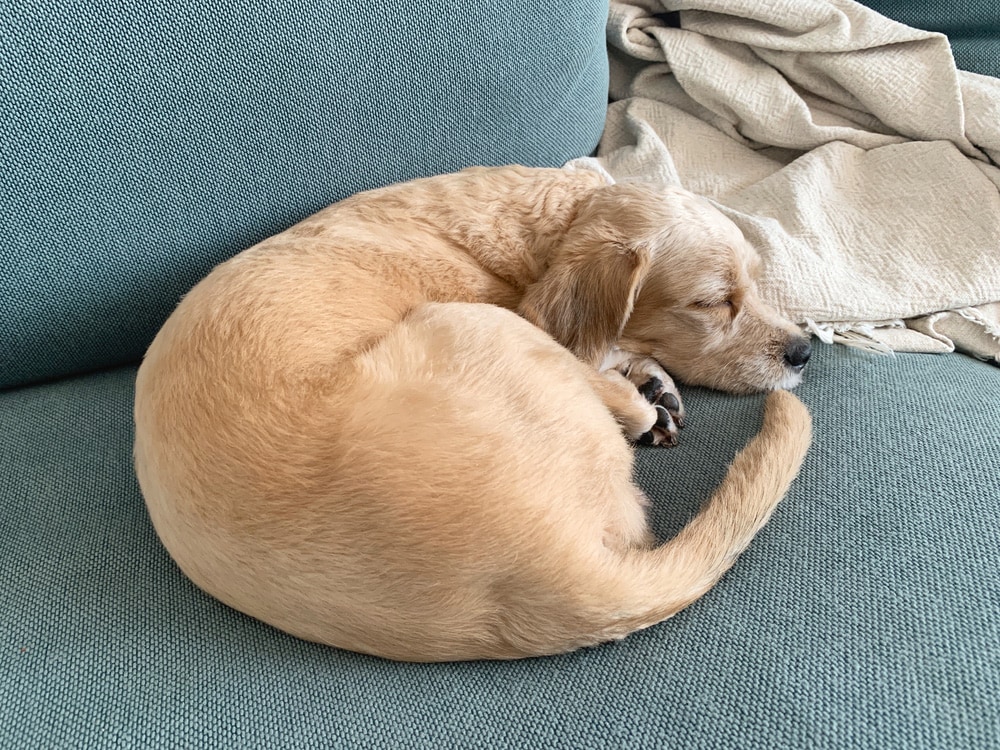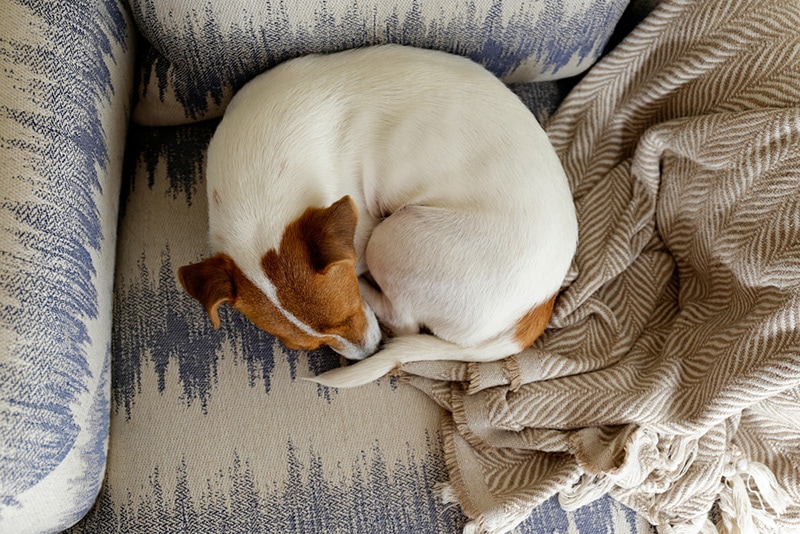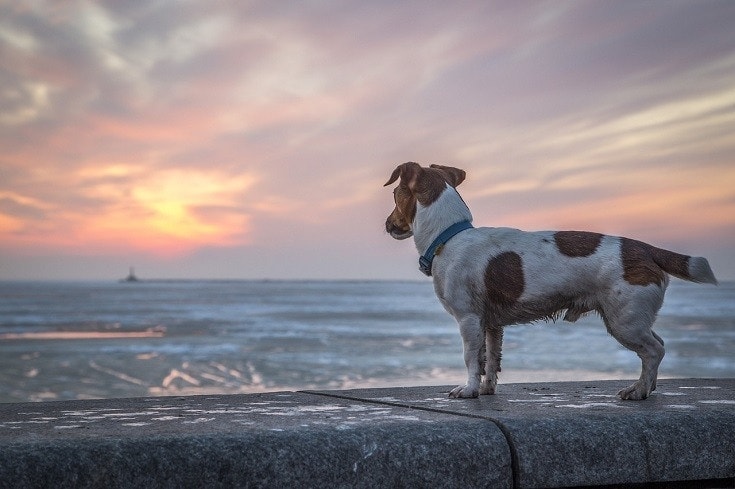Why Do Dogs Curl Up? 7 Common Reasons
Updated on

Dogs love their sleeping time. After all, it’s hard work to fetch, chase squirrels, and roughhouse all day long. That explains why they sleep up to 12 hours daily. It takes a lot of energy and recovery time.
We can relate to many reasons that dogs curl up while they sleep. Many people prefer sleeping on their sides or in a fetal position for the same reasons. It’s what all of us know, and it feels good. Canines aren’t far off the mark on this score, although they have other factors influencing their preferences.
The 7 Reasons the Dogs Curl Up
1. Exposing Less Surface Area for Warmth
Let’s begin with the most obvious reason that dogs curl up when they sleep. This position keeps them warm by exposing less surface area to the elements where temperature exchange can occur. It’s the same principle behind Bergmann’s Rule, which states that animals get larger with the ambient temperature. The extra padding helps the internal organs stay warm.
Remember that survival is the driving force behind this adaptation. Failing to stay warm could reduce your chances of passing your DNA on to the next generation.

2. Protecting Vulnerable Areas for Security
The belly is a vulnerable area for animals. It doesn’t have the protection of bones to safeguard it from injury. An animal is most defenseless when they sleep. A predator can sneak up on them before they awaken to the threat. It may not seem like much, but the extra seconds of protection from curling up could give them the edge they need to survive an attack.
Pet owners may experience this phenomenon in real time with their animal companions. Ones that allow you to rub their bellies are showing remarkable trust. Remember that when your dog or cat lets you pet their tummies.
3. Feeling Stressed
Dogs do an excellent job of trying to make things right. Curling up in a ball could be a sign of your pup trying to comfort themself and feel better, not unlike a person getting into a fetal pose. Other factors might be in play, such as the ambient temperature and how tired the pooch is after all the day’s activity. You can think of it as a dog trying to ground themself for tomorrow’s next adventure.

4. Responding to Artificial Light
Wild animals have a set schedule that periods of light and dark provide. Their activities and cycles revolve around it. Pets lose that connection with nature’s rhythms while living indoors. Our lives no longer rely on sunrise and sunset necessarily. A dog curling up may be trying to restore some routine to their life by holding fast to their schedule regardless of the artificial light and activity.
5. Feeling Good
A dog choosing to curl up when they sleep may just be doing it because it feels good, not unlike how you might have a favorite position. Some of the reasons you opt for one over another may be the same as for your pet. An arthritic pup may settle down in a specific way to relieve joint pain. Likewise, a pooch that isn’t feeling well may lie in a position that makes them most comfortable.

6. Following Instincts
Even though humans domesticated canines at least 20,000 years ago, they still have instinctive behaviors that served them well when they had to be mindful of predators. That makes curling up a survival trait with roots that go back to those days in the wild. Interestingly, many wild animals, such as felines, foxes, and wolves, assume a similar position when sleeping.
7. Living Without Fear
It’s one thing to sleep lightly like a cat often does to respond quickly to something going on around them; it’s another matter to go into a deep slumber, dead to the world. When a dog curls up, wrapping their tail around their body, it’s time for some serious sleep, and an animal doesn’t do that unless it feels safe.

Final Thoughts
Curling up serves several purposes for dogs. It can simply keep them warm when temperatures dip. It can also give them a survival advantage by protecting vulnerable body parts. Remember that our pets have these instincts even if they don’t need them as pampered companions. Old habits die hard. The other mitigating factors are peace and comfort, which we have nurtured through domestication.
See Also:
- Reverse Sneezing in Dogs: Causes & What to Do (Vet Answer)
- Can Dogs Be Introverts? Vet-Approved Facts & FAQ
Featured Image Credit: Mia Hao, Shutterstock










